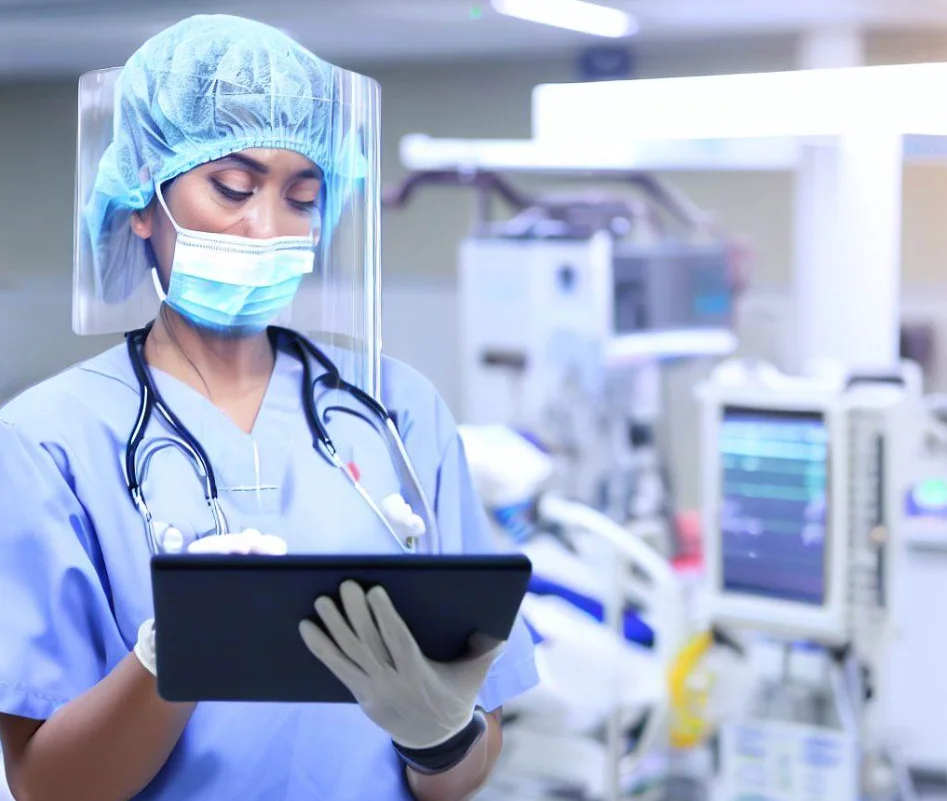Healthcare workers are the backbone of the US economy, contributing to its growth and development. Despite their immense contribution, they face various risks while performing their duties every day. While it is no secret that healthcare workers are essential, it is important to recognize the challenges they face in their line of work.
The healthcare industry is growing rapidly, and with it comes an increased demand for healthcare workers. However, this growth also means that healthcare employees are exposed to a range of risks and hazards that can compromise their safety and well-being. These risks can range from physical injury to exposure to infectious diseases, and even psychological trauma.
For instance, healthcare workers are at risk of physical injuries resulting from lifting patients or moving heavy equipment. They are also at risk of exposure to infectious diseases such as COVID-19, tuberculosis, and HIV/AIDS. In addition, they may experience psychological stress due to long working hours, witnessing traumatic events, and dealing with difficult patients.
Despite these risks, healthcare workers continue to provide essential services to their patients. They often put their own safety on the line to ensure that their patients receive the best possible care. It is important for healthcare organizations to prioritize the safety and well-being of their employees by providing them with the necessary training, equipment, and support.
Challenges Faced by Healthcare Workers: Protecting Those Who Protect Us
Healthcare workers are essential to our society, but they face numerous challenges and risks while performing their duties. Among the workplace hazards they encounter are physical injuries, harmful exposures to chemicals, allergic reactions, and patient violence. Unfortunately, verbal and physical harassment from patients is also prevalent, which can lead to chronic stress and high staff turnover rates.
In a Medscape.com survey, 71% of nurses reported experiencing sexual harassment from patients. This type of mistreatment has become increasingly common during the COVID-19 pandemic, as patients and citizens lash out in fear. As a result, healthcare leaders must prioritize the safety and well-being of their employees.
 The healthcare industry has a responsibility to care for its workers, just as these workers care for patients. Healthcare leaders must take proactive measures to improve safety and reform existing policies to include resources and technology that offer protection for healthcare employees. One such measure could be the implementation of employee safety devices (ESDs), also known as panic buttons. These devices can provide prompt assistance to staff in case of an emergency, ensuring that they can be located and assisted quickly.
The healthcare industry has a responsibility to care for its workers, just as these workers care for patients. Healthcare leaders must take proactive measures to improve safety and reform existing policies to include resources and technology that offer protection for healthcare employees. One such measure could be the implementation of employee safety devices (ESDs), also known as panic buttons. These devices can provide prompt assistance to staff in case of an emergency, ensuring that they can be located and assisted quickly.
The healthcare industry must recognize that protecting its workforce is not only a moral imperative but also a practical one. Improving safety measures and investing in resources that protect healthcare workers can reduce staff turnover rates, improve employee morale, and ultimately lead to better patient outcomes. By prioritizing the safety of its employees, the healthcare industry can create a safer and healthier working environment for all.
Key Capabilities to Look for in an Employee Safety Device Platform for Hospitals
Selecting the right employee safety technology for hospitals is crucial to ensure the safety and well-being of healthcare staff. Here are some key capabilities to look for when choosing an employee safety device platform:
Wearable and Accessible: The chosen platform should be easily accessible and convenient for staff to carry with them while performing their daily duties. Consider a small, handheld LTE panic button and a smartphone-enabled application to ensure quick and discreet access to emergency assistance.
Cloud-based and Customizable: Look for a customizable, cloud-based platform that can scale according to your hospital’s unique needs. Choose a platform that can integrate with existing hardware and software to provide real-time geolocation data during an emergency.
Location Precision: Precise location pinpointing is essential in high-risk scenarios. Choose a platform that utilizes beacon Bluetooth technology to provide real-time GPS coordinates of staff members both on and off the property, even in multi-story buildings.
User-Friendly: Opt for a platform that is easy to use and requires little to no training to ensure seamless adoption by staff. Avoid complicated interfaces and inconvenient protocols that may lead to staff resistance.
Vendor Support: Consider the level of support provided by the technology vendor during the installation phase and beyond. Choose a vendor that provides ongoing support to ensure the long-term success of the platform.
Embracing a Safer Future for Healthcare Workers: Investing in Staff Safety
The healthcare industry has the opportunity to lead the way in creating a safer future for employees and patients alike. With the right technology in place, healthcare workers can arrive at work each day knowing that their safety is a top priority. By investing in employee safety devices and other safety measures, hospitals can reduce staff turnover rates, improve employee morale, and ultimately provide better patient care.
It’s time for the healthcare industry to prioritize the safety and well-being of its employees. Are you ready to invest in staff safety? Contact us for more information on how we can help you choose the right employee safety device platform for your hospital and create a safer, healthier working environment for all.
